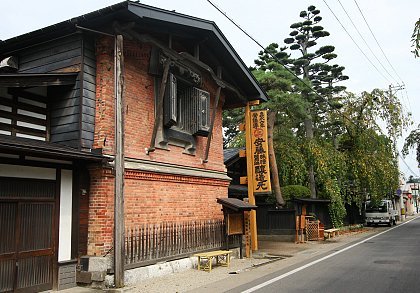Apart from the loss of its castle, Kakunodate remains remarkably unchanged since its founding in 1620. The town was built with two distinct areas, the samurai district and the merchant district. Once home to 80 families, the samurai district still has some of the best examples of samurai architecture in all of Japan.
Kakunodate is also well known as the location of one of the Tohoku Region's most popular cherry blossom spots. Around late April and early May, large crowds of people come to see Kakunodate's special combination of pink blossoms and historic homes.
Kakunodate Castle was an important regional fortification, and in the late 1500s a small castle town was built around it. The town was moved to Kakunodate's current location in 1620, marking the founding date of Kakunodate town, as well as the demolition of its castle due to a change in legislation by the shogunate.
Today, nothing on the hilltop site of Kakunodate's former castle indicates that it was once a center of regional power. Instead, an overgrown path leads up the steep hillside to a flattened plain with a bench. A panoramic view of Kakunodate town and the Hinokinaigawa River rewards those who make the short climb.
Of the samurai houses that remain intact, six are open to the public and offer visitors the chance to see how middle class and wealthy samurai families might have lived. Of the six open houses, two are particularly noteworthy for their size and quality: the Aoyagi House and the Ishiguro House.
The Aoyagi House (Aoyagi-ke) is an impressive complex with multiple buildings containing museum collections, restaurants and gift shops. The displays provide interesting information in both English and Japanese on samurai traditions, lifestyle and Japan's historical context in relation to Kakunodate. It is a useful place to visit for those interested in Kakunodate's samurai history.
The second samurai home of special note is the Ishiguro House (Ishiguro-ke). The area open to visitors is much smaller than that of the Aoyagi House, largely because the family still resides in the rest of the house. On display is a small collection of samurai armor and clothing, as well as anatomical drawings and studies. The Ishiguro House also has a well preserved storeroom.
The other four open houses are free to enter and offer varying levels of accessibility. They are mostly examples of middle class samurai residences and thus, are smaller than the Aoyagi-ke and Ishiguro-ke. There are also two museums that may be of interest to visitors: Denshokan Museum displays Kakunodate's traditional products and craftwork, while Omura Art Museum houses a private glasswork collection.
Kakunodate was established as a castle town in 1620 under the authority of Ashina Yoshikatsu, a local lord. At that time, the town was built to reflect a division between the samurai district and the merchant district. Although the samurai district is better known to tourists, the merchant district also claims some interesting buildings and history.
The most impressive building in the district is Ando Jozo Miso storehouse and shop. The Meiji Period brick storehouse is a beautifully preserved structure, while the shop sells miso and soya sauce, which have been produced by the same method for over 150 years, drawing Japanese cuisine aficionados from across the country.
A few other historic buildings can be found dispersed among the more modern construction prevalent in this part of town. Many buildings, both historic and modern, are stores selling cherry tree bark products. Local woodworkers craft the cherry bark into small mirrors, jewelry boxes, and pieces of furniture. Known as "kabazaiku", cherry bark woodwork dates back to a Kakunodate samurai named Fujimura Hikoroku who popularized the craft among his neighbours.
Nishinomiya House is another important compound located adjacent to the merchant district in a second, smaller samurai zone. Once the home of the wealthy Nishinomiya family, the different buildings have since been converted into a restaurant, shop and museum. The Nishinomiya complex is representative of a prosperous, multi generational home.
When traveling to the Akita preficture of the Tohoku region in Japan be sure not to miss Kakunodate.




No comments:
Post a Comment